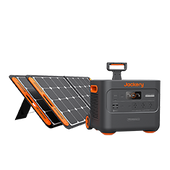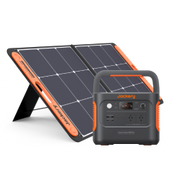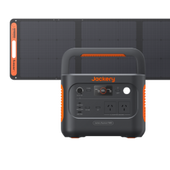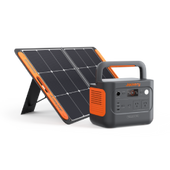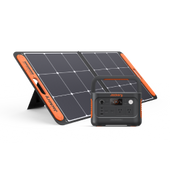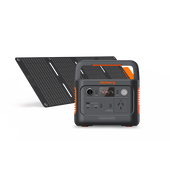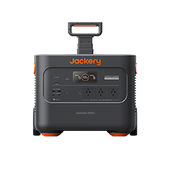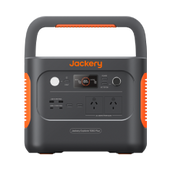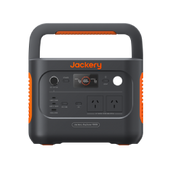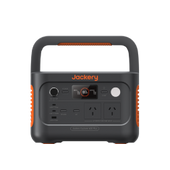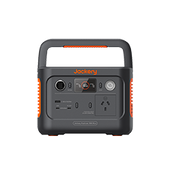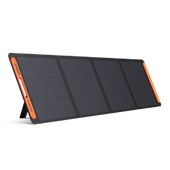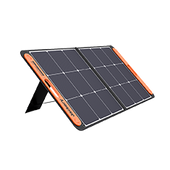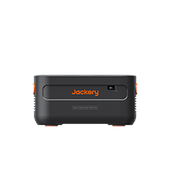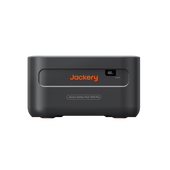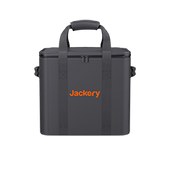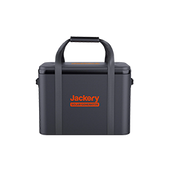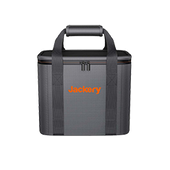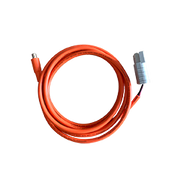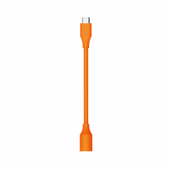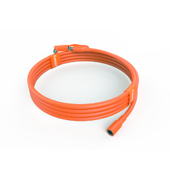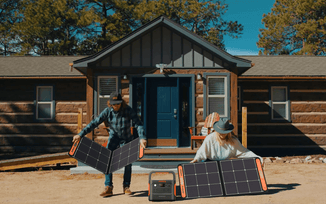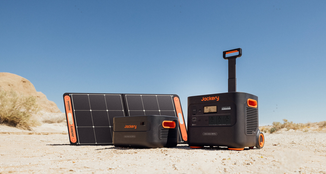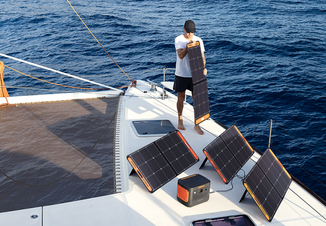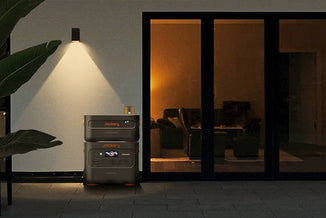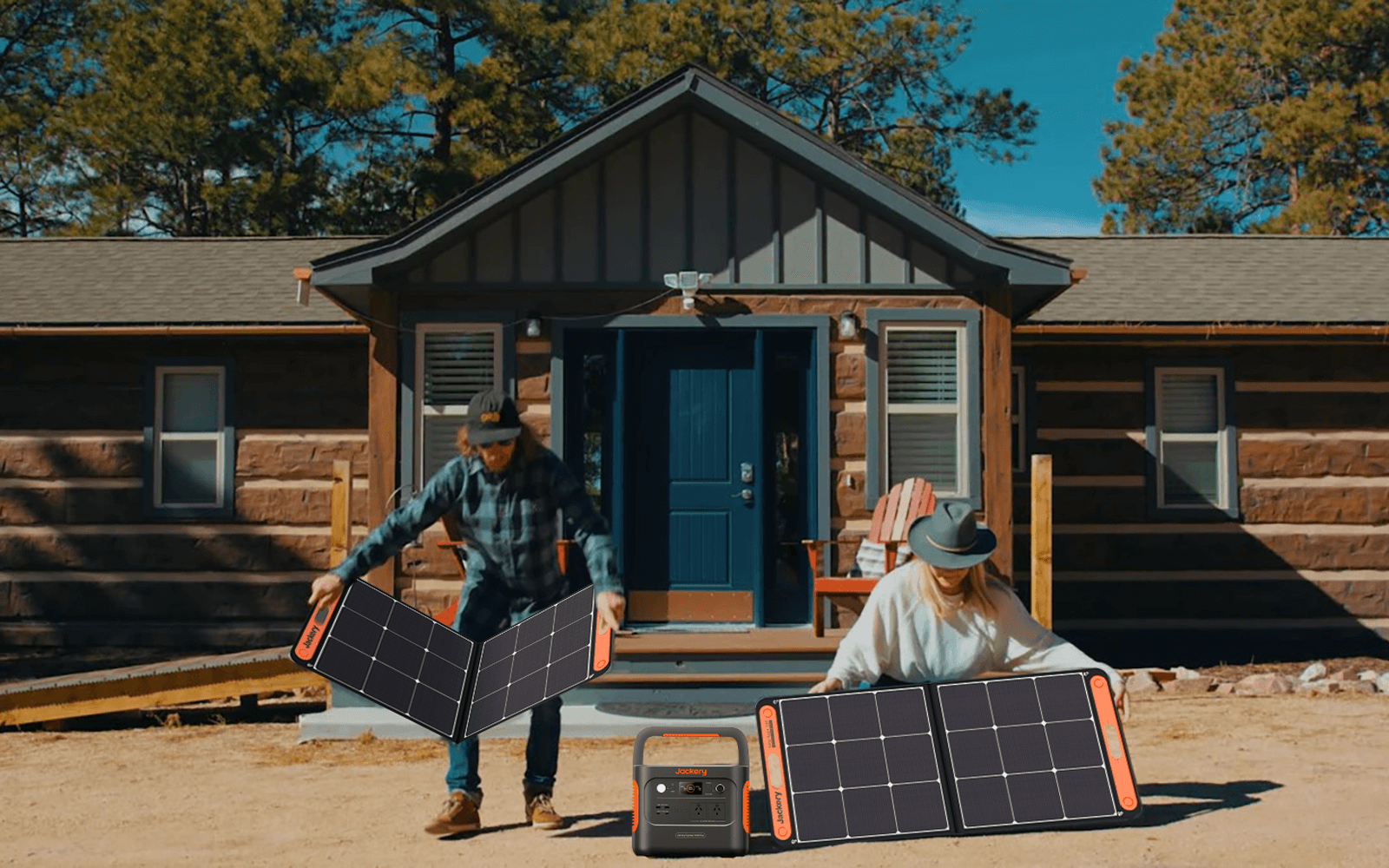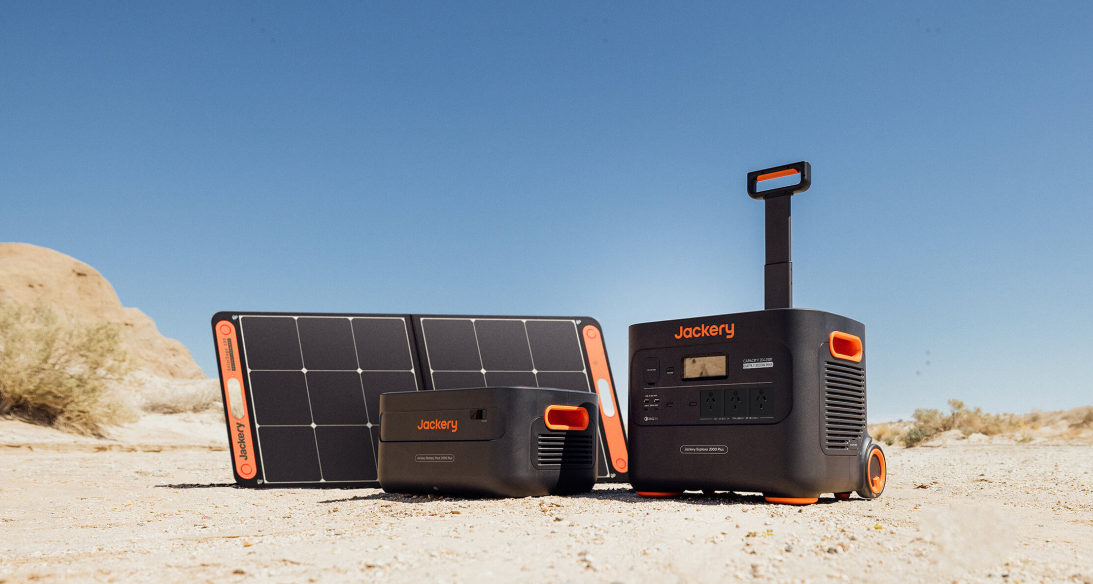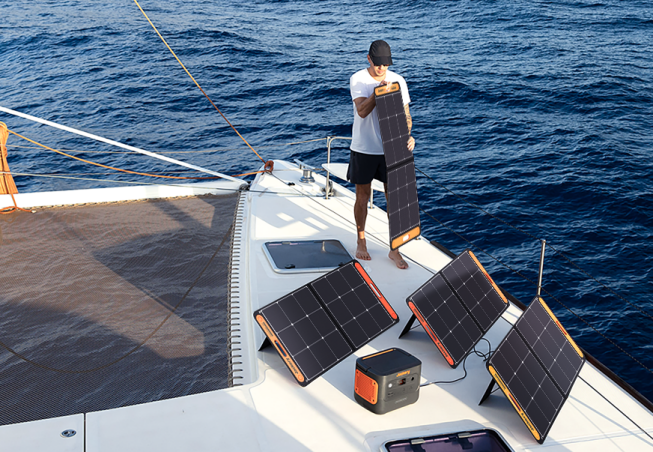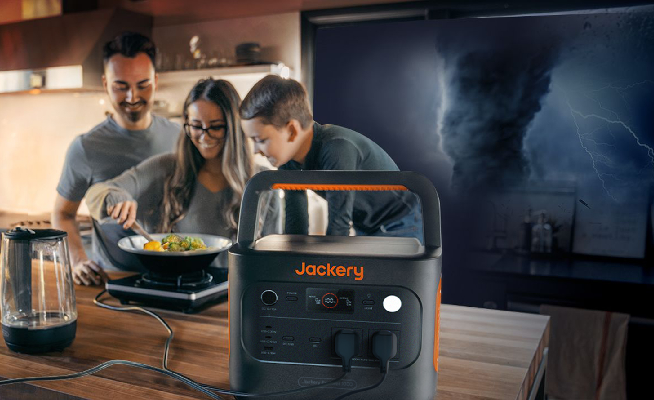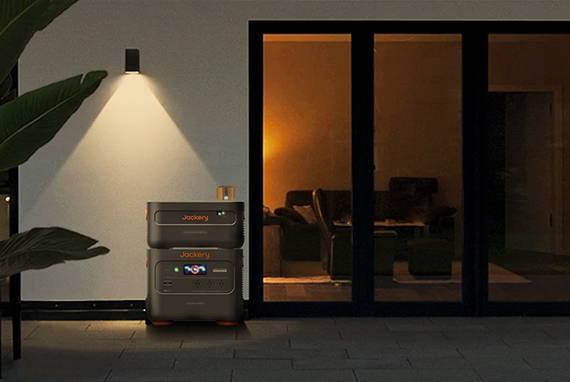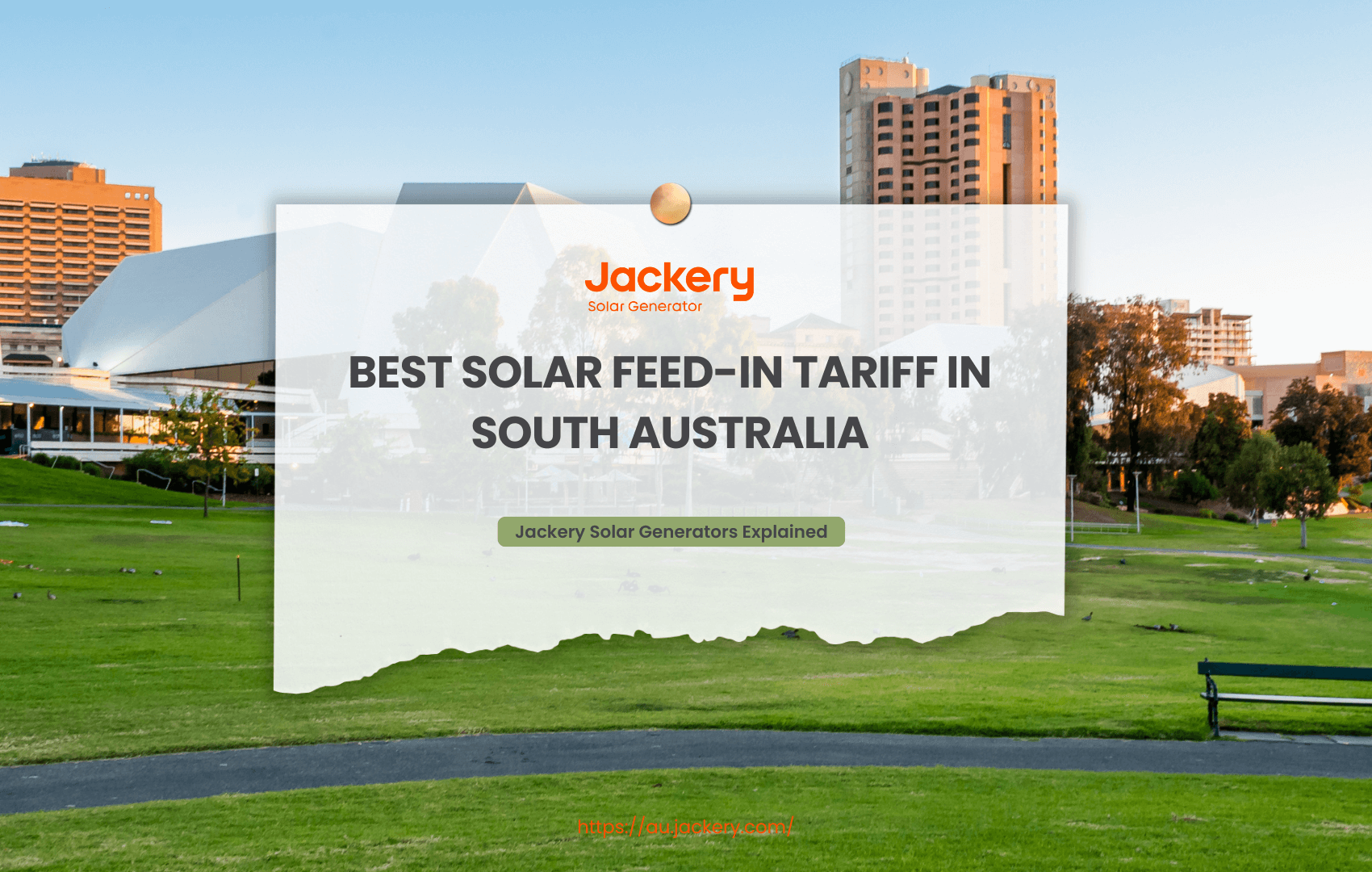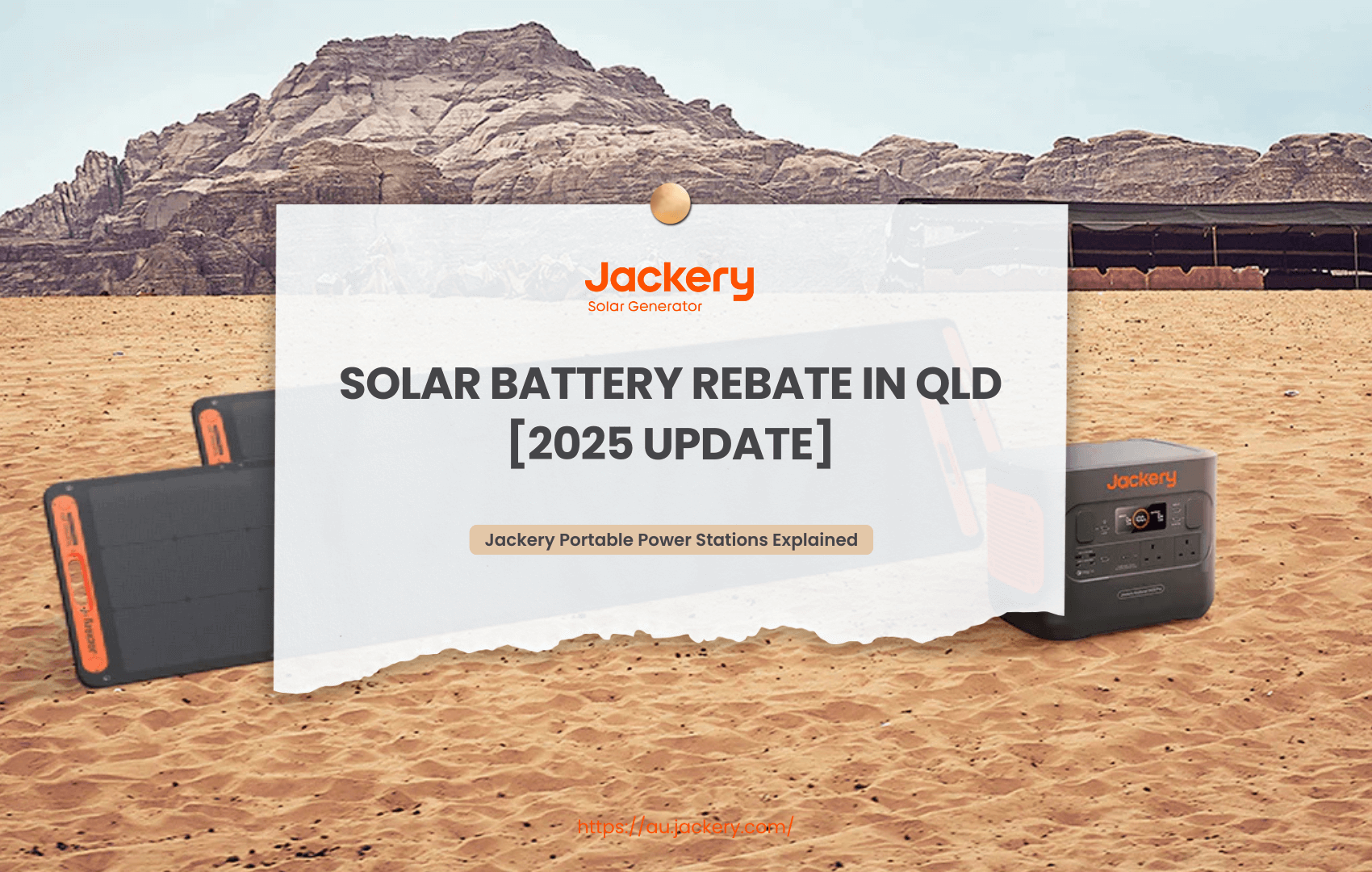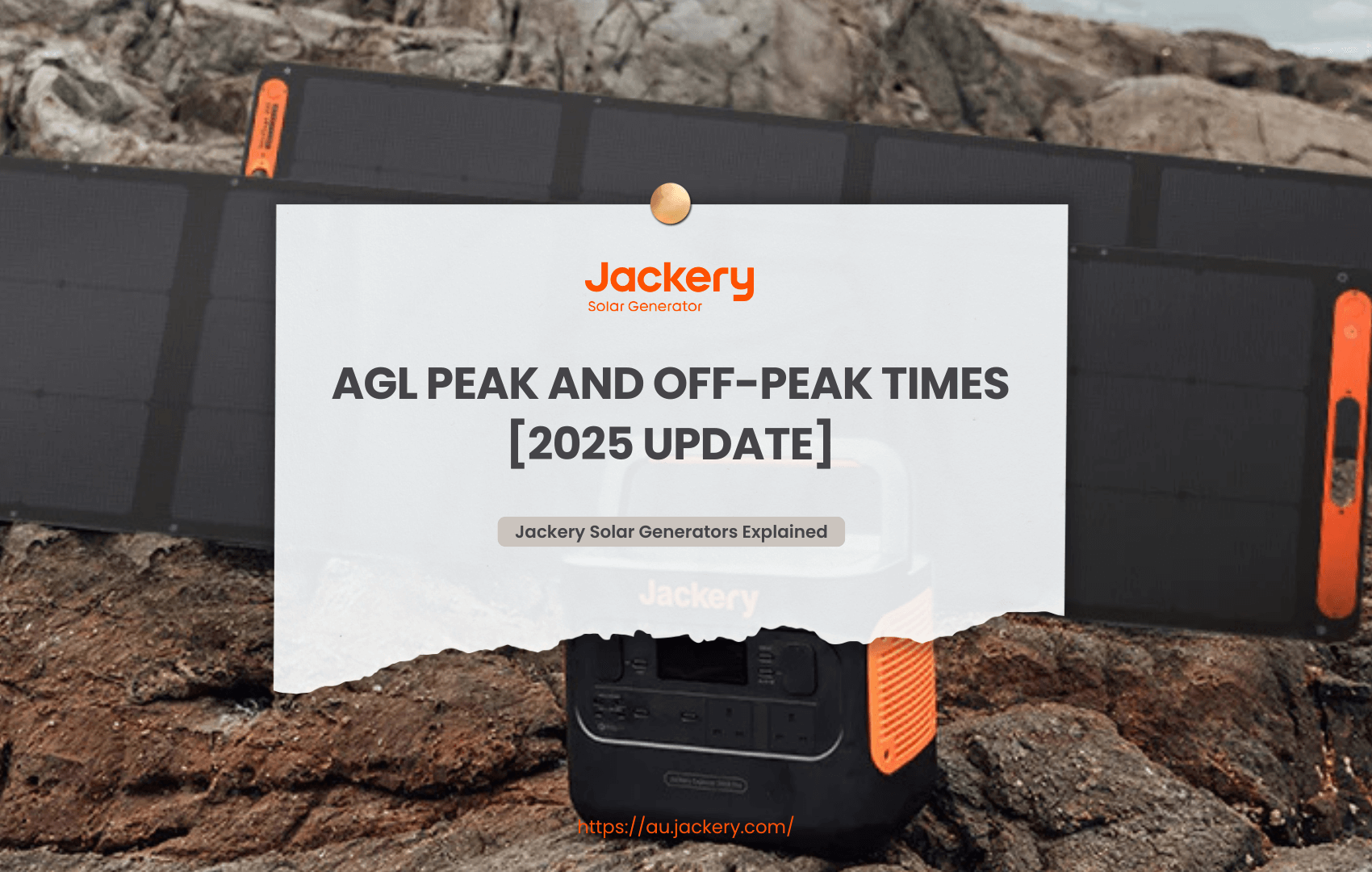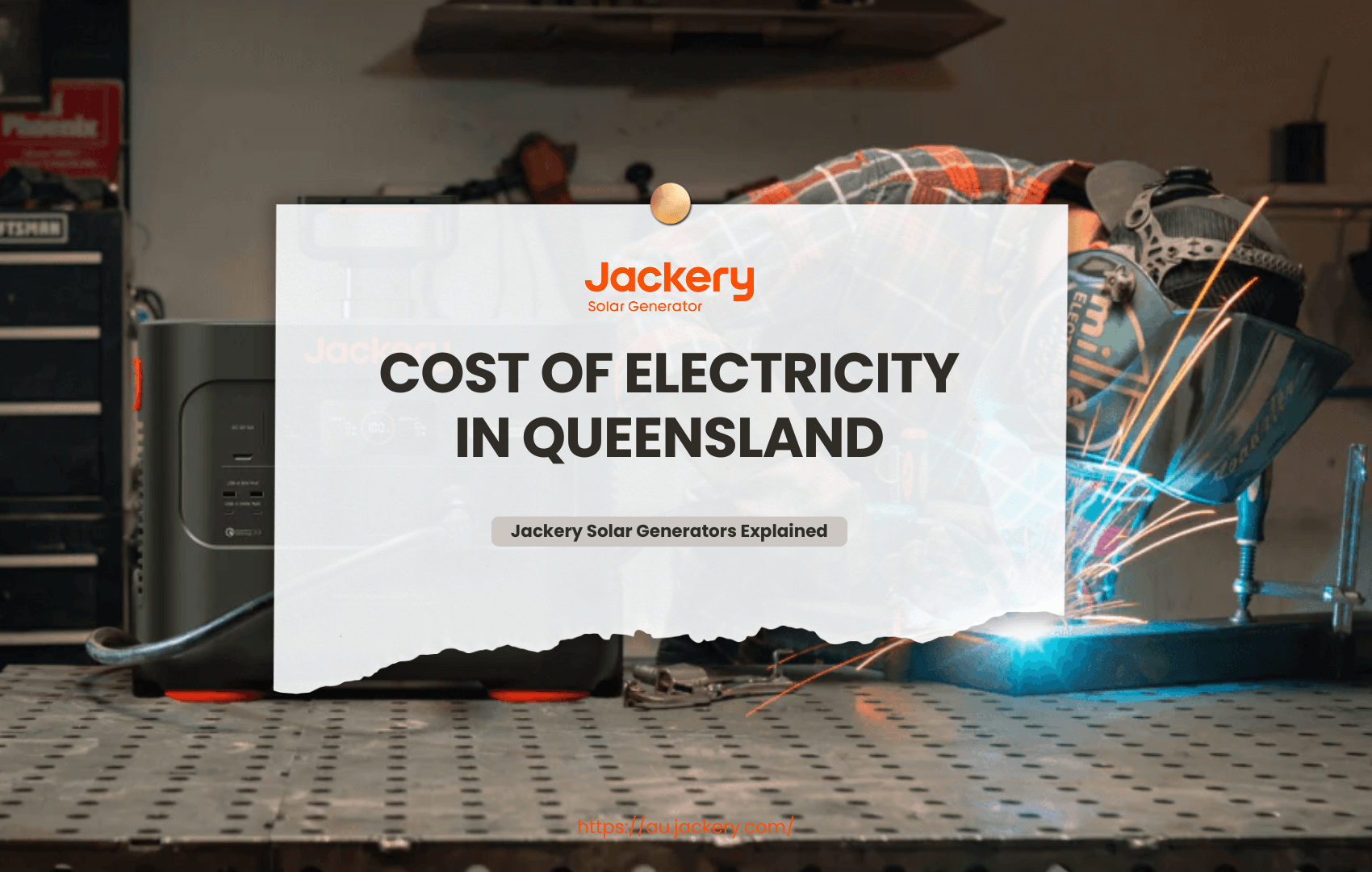|
Key Takeaways: |
|
- Many incentives and rebates are available to individuals and businesses in South Australia, such as the Retailer Energy Productivity Scheme and the No Interest Loans Scheme. - EnergyAsutralia, Origin Energy AGL, ENGIE, and Alinta Energy have the best feed-in rates in South Australia. - Some critical factors to consider when choosing solar retailers include customer services, bills, solar options, and technology. - We highly recommend Jackery Solar Generator 2000 Plus, 1000 Plus, or 600 Plus to save energy bills by charging household appliances unlimited solar energy. |
Understand Solar Feed-in Tariffs
Solar feed-in tariffs, sometimes known as FiTs for short, are the amount paid per kWh for the extra energy your solar power system generates. The owners, primarily small company owners or households, may sell any extra power their solar panels produce back to the grid thanks to these prices.
Solar panels produce more power than they take in throughout the day. Solar feed-in tariffs compensate you for the extra energy you put back into the grid rather than letting it go to waste. This lowers your power costs dramatically and may even result in a credit on your account.
Renewable energy solutions become more financially feasible for a wider variety of consumers when feed-in tariff savings offset the initial cost of solar panel installations.
Eligibility
To be eligible for the FiT, customers must install an appropriate renewable energy system on their property and connect it to the grid. The system must also fulfil all applicable safety and performance requirements and be recognised by the Clean Energy Council.
Benefits
A solar system can have a much shorter payback period when combined with government incentives, such as the FiT, SRES, and rebates. This makes solar energy a desirable alternative for people who want to lower their energy costs and carbon footprint.
Overall, South Australia's solar FiT is a good investment programme in green energy. It encourages the state to use renewable energy technology and offers a financial incentive for producing clean, renewable power.
Incentives, Rebates and Schemes
In South Australia, various incentives and rebates are available to people and companies wishing to upgrade their houses or buildings to be more energy-efficient.
1. Retailer Energy Productivity Scheme (REPS)
Businesses and homes in South Australia have access to various advantages and additional incentives to encourage energy-efficient practices. For instance, consumers who purchase energy-efficient equipment like refrigerators, freezers, and heat pump dryers can get refunds of up to $570 under the Retailer Energy Productivity Scheme (REMS).
2. No Interest Loans Scheme (NILS)
The Programme for Interest-Free Loans Low-income SA households can obtain loans from NILS at reasonable rates to buy appliances and other necessities. With this refund, you may borrow up to $2000 for necessities without worrying about a credit check, fees, or interest. Repayment terms are inexpensive and span 12 to 18 months.
3. Energy Bill Concessions
Low-income South Australians who qualify can seek assistance with their energy expenses. This service is a rebate for low-income households; nevertheless, refunds are not guaranteed. You may apply by visiting their website. You may use or see whether you qualify. You might be qualified for energy payments of up to $231.41.

Best Solar Feed-in Tariff in South Australia
The most innovative and profitable way to reduce your power costs is to use solar feed-in tariffs. In addition to providing electricity for your house, the solar feed-in tariffs may help you save a lot of money and protect the environment. Finding the best solar feed-in tariff in South Australia will guarantee you are paid fairly for the extra energy your solar panels produce.
Solar Feed-in Tariff in South Australia
|
Plan |
Description |
Rate |
Rebate $/month |
|
SA ENGIE Solar Plus elec |
Get paid a feed-in tariff of 18 cents per kWh for the first 3 kWh of power sent to the grid each day, plus 8 cents per kWh for each subsequent kWh exported to the grid that day (subject to change). |
18 c/kWh |
$54.00 |
|
Origin Solar Boost Plus |
A retailer receives 17 cents for every kWh. All sums include GST, if applicable. |
17 c/kWh |
$51.00 |
|
Standard retailer feed in-tariff that becomes accessible following the conclusion of the benefit period. |
6 c/kWh |
||
|
SA ENGIE Solar Referral elec |
For the first 3kWh of power sent to the grid each day, set for 24 months, your feed-in tariff will be 16.5c/kWh. After that, it will be 10c/kWh for each additional kWh of electricity exported to the grid that day, subject to modification. |
16.5 c/kWh |
$49.50 |
|
SA ENGIE VPP BYO elec |
Market feed-in tariff for VPP | All kWh/day |
15 c/kWh |
$45.00 |
|
SA ENGIE VPP elec |
Market feed-in tariff for VPP | All kWh/day |
15 c/kWh |
$45.00 |
|
Origin Solar Boost |
Origin charges 12 cents per kWh up to a 14 kWh daily export cap. The number of days in your billing cycle multiplied by your daily export limit of 14 kWh yields the average daily export limit for your billing period. |
12 c/kWh |
$36.00 |
|
You will be paid our regular retailer feed-in rate of 6 cents per KWh for any amount beyond the daily export. |
6 c/kWh |
||
|
Solar Max |
The first 15kWh of the day's EnergyAustralia Retailer Feed-in Tariff (excluding any applicable GST) |
12 c/kWh |
$36.00 |
|
EnergyAustralia Retailer Feed-in Tariff thereafter (excl. GST if any) |
8.5 c/kWh |
||
|
Residential Solar Savers No Exit Fee |
AGL Retailer Feed-in Tariff for the first 10kWh per day (<10kWh per day) |
10 c/kWh |
$30.00 |
|
AGL Retailer Feed-in Tariff Thereafter (>10kWh per day) |
6 c/kWh |
Best Solar Feed-in Rates in South Australia
These top solar feed-in tariffs in South Australia have the potential to significantly reduce your power costs while also having a positive environmental effect.
|
Retailer |
Min Solar FIT |
Max Solar FIT |
Detailed Conditions |
|
EnergyAustralia |
8.5 c |
12.0 c |
System size 30kW max |
|
Origin Energy |
4.0 c |
10.0 c |
Only if buy solar through Origin – 10kW max |
|
AGL |
3.0 c |
10.0 c |
System size 10kW max |
|
ENGIE |
5.5 c |
8.0 c |
|
|
Alinta Energy |
8.0 c |
8.0 c |
System size 5kW max |
Compare Solar Feed-in Tariff in South Australia
It is necessary to be aware of the many kinds of solar feed-in tariffs South Australia offers to comprehend the offers made by power companies. Let's investigate the primary categories:
Government-Backed FiTs: With a solar feed-in tariff SA, these programmes are designed to offer a set price per kilowatt of electricity produced. Because they encourage the use of solar energy by electricity suppliers and customers alike, these kinds of solar feed-in tariffs are essential to the state's renewable energy ambitions.
Utility Company Tariffs: Several utility providers provide feed-in tariffs for solar energy in South Australia. Each has unique qualities, and they are sometimes combined with other advantages like lowered power bills at particular times of the year or tier pricing according to energy usage. Utility companies frequently customise their rates to match the various demands of their customers, which is one of the key advantages of their tariffs. This gives the customer options and freedom.
Community Solar Programs: Community-driven initiatives make collective investment in solar installations possible. Members of this community project profit from solar fields on the tariff in common. These initiatives promote a feeling of accountability and community.
Solar rebates SA give companies and homes cash incentives to install solar panels, lowering the cost of switching to renewable energy. Programmes for community solar energy are great for those whose rooftops might not be appropriate for solar panels.
3 Best Solar Plans in South Australia
Several solar plans are available in South Australia, each offering a reasonable feed-in tariff. However, selecting the best plan involves more than just the FiT, so we go over other crucial aspects of every solar plan, such as incentives, fixed and variable rates, and more. Please be aware that schedules might alter. You should contact the merchant with any enquiries about the plan's terms.
Energy Australia - Solar Max - 1st Place
The first plan is Energy Australia's Solar Max plan. This variable-rate plan features competitive energy rates and a high feed-in tariff rate of 12c/kWh. When you sign up for this plan, you receive free energy that is 100% carbon neutral. Additionally, customers shouldn't anticipate any lock-in contracts or departure costs.
Some features of this plan include:
12c/kWh
Zero exit fees
High FiT rate
*Based on a home customer's annual use of 4011 kWh on a single rate tariff in the SA Power Networks. The annual DMO reference price is $2,279.
Origin Energy - Solar Boost - 2nd Place
The Solar Boost package from Origin Energy comes in second. This variable-rate plan offers a competitive plan rate and an enticing 10c/kWh feed-in tariff.
Some features of this plan include:
10c/kWh
No lock-in contracts
Variable energy rates for 12 months
*Based on a home customer's annual use of 4011 kWh on a single rate tariff in the SA Power Networks. The annual DMO reference price is $2,279.
AGL - Solar Savers - 3rd Place
Third place goes to AGL's Solar Savers initiative. This variable plan has a high feed-in tariff of 10c/kWh, no lock-in contract, and no exit costs.
Some features of this plan include:
10c/kWh
Zero exit fees
Bill smoothing
*Based on a home customer's annual use of 4011 kWh on a single rate tariff in the SA Power Networks. The annual DMO reference price is $2,279.
Jackery Solar Generators Explained
Due to its dedication to renewable energy, South Australia is among the top jurisdictions for solar incentives, such as attractive feed-in tariffs. These tariffs enable homeowners to profit from and increase the value of their solar systems by putting extra solar energy back into the grid.
In South Australia, a standard household equipped with a 6.6kW solar system can anticipate annual savings of $1,100 to $1,500 on their electricity bill, while larger 10kW systems may yield savings of $2,000 to $2,700 per year, contingent upon electricity consumption and self-consumption rates; this is attributable to the region's comparatively high electricity prices and favourable solar rebates.

Many householders may think installing a solar panel system costs too much and still needs to work with the utility grid. This is the primary concern that people will not choose solar products. At that time, we recommend you first try solar generators like Jackery Solar Generators to see whether the solar products are workable.
This generator combines Jackery Solar Panels with a Portable Power Station to fully utilise solar energy. The solar generator costs little compared to the solar panel system but charges appliances effectively.
Suppose you worry about its working efficiency on rainy days or at night. In that case, the Portable Power Station can be recharged by wall outlets, carports, or other generators, ensuring that it can be used anytime and anywhere. Once fully recharged, it can work for a few hours to several days.
Jackery Solar Generator 2000 Plus
With the Jackery Solar Generator 2000 Plus, the best option for off-grid excursions and disaster preparedness, experience unmatched power and versatility. With a 12kWh expandable capacity and support for up to five additional battery packs, this powerhouse will energise you for up to a week without needing conventional electrical sources.
The Solar Generator 2000 Plus is centred on longevity and safety. Its 10-year lifespan is guaranteed by its LiFePO4 battery chemistry, and its cutting-edge ChargeShield Technology provides 62 layers of protection to protect your devices and prolong battery life. This generator is designed to provide dependable, extremely safe performance in any circumstance and is certified by the FCC, CE, and UL standards.
Recharge rapidly and sustainably with industry-leading solar conversion efficiency. Pair the Explorer 2000 Plus with up to six SolarSaga 200W panels to achieve a full charge in just 2.5 hours. Whether camping, working remotely, or preparing for emergencies, this whisper-quiet, emission-free generator delivers all the energy you need with a minimal environmental footprint.

(*The working hours are only for reference; the actual working hours depend on your usage.)
Jackery Solar Generator 1000 Plus
Discover the strength and adaptability of the Jackery Solar Generator 1000 Plus, intended to increase your energy independence. This portable generator's amazing 2000W output and sturdy 1264Wh capacity power 99% of equipment, making camping, emergencies, and off-grid adventures easier.
Because of its expandable design, you can connect up to three additional battery packs, increasing its capacity to an incredible 5kWh, sufficient for one to three days of backup power at home.
With four SolarSaga 100W solar panels, the Solar Generator 1000 Plus uses Advanced IBC Technology to deliver ultra-fast solar charging in as little as 4.5 hours, guaranteeing you stay powered up even in remote areas. Its LiFePO4 battery cells provide longevity, with 4,000 charge cycles and ten years of dependable performance.
Take control with the Jackery App, which offers real-time monitoring and customisation through WiFi or Bluetooth. Compact, efficient, and built to last, the Jackery 1000 Plus is backed by a 3+2 year warranty, ensuring peace of mind as you embrace sustainable energy solutions.

(*The working hours are only for reference; the actual working hours depend on your usage.)
Jackery Solar Generator 600 Plus
The Jackery Solar Generator 600 Plus is the perfect blend of portability and durability. With a compact size of just 30 x 21.9 x 19.7 cm and a weight of 7.3kg, it's easy to store and transport. Its rugged design and fireproof materials ensure reliability, while a foldable handle makes it effortless to carry wherever your adventures take you.
Despite its small size, the Solar Generator 600 Plus packs a punch with 800W output power and a 632Wh capacity. It supports many devices, from smartphones to portable coolers, making it ideal for outdoor recreation and emergency backup situations.
Its intuitive design includes a Smart Screen for real-time updates on capacity, charging status, and other critical information. With this compact yet powerful generator, you'll always stay prepared, no matter where you are.
A complete charge in 1.6 hours, enhanced battery pack lifespan by 30%, designed for long-term reliability. Achieve a full charge from 0 to 100% in one hour, ensuring emergency readiness. The app enables the Emergency Super Charging mode, and the Fast and Quiet Charging modes offer enhanced battery protection.

(*The working hours are only for reference; the actual working hours depend on your usage.)
Factors to Consider When Choosing Solar Retailers
In addition to feed-in tariff rates, several other aspects must be carefully considered while assessing South Australian energy suppliers. One is customer service. For a seamless and fulfilling experience, you would want your energy supplier to be responsive, dependable, and provide high-quality customer care, so learning about their reputation is essential.
Factor 1: Evaluating Customer Service Of Energy Providers
It is critical to evaluate an energy provider's response to consumer enquiries while making your decision. Considerations such as effective complaint handling and support services are crucial. In addition to ensuring a seamless energy consumption experience and improving overall customer happiness, dependable customer service should constantly be evaluated. This includes looking at the availability of help for technical and billing enquiries.
Factor 2: Understanding The Billing Process And Transparency
Transparent billing procedures are required to understand energy prices and ensure the energy bill has no hidden fees. They increase trust between customers and service providers, facilitating well-informed choices.
In this context, comprehending the regularity and transparency of billing statements is crucial. Furthermore, being knowledgeable about the billing process and transparency may assist customers in assessing their energy use and making wise decisions.
Factor 3: Exploring Renewable Energy Options Offered By Providers
An electrical company's use of renewable energy sources indeed says a lot. At the very least, it provides customers with a range of renewable energy options to select from for various incentives and benefits. Thus, it becomes sense to look into factors like the availability of renewable energy certifications, green energy plans, and programmes that assist clean energy projects.
Factor 4: Technology
Some energy companies offer online monitoring tools that allow you to track your energy use in real-time. These tools enable you to purchase more energy-efficient equipment, move your consumption to off-peak hours, and determine when to use particular items.
Smart metres are another piece of technology that many companies provide. The amount of energy you consume is automatically sent via smart metres, which removes the need for human metre readings and allows for more precise invoicing for excess energy consumption.
Factor 5: Contract Terms
The contract terms outline the length of your contract, the conditions of your energy bill, and the rates at which you will be paid for power. It is crucial to consider whether you would rather have a fixed-rate or variable-rate plan.
Fixed-rate plans provide peace of mind amid economic fluctuations by providing a predictable plan with a constant rate. Your electricity costs might fluctuate since variable-rate plans don't have set rates.

Best Solar Feed in Tariff South Australia FAQs
The following are the frequently asked questions about the best solar feed-in tariff in South Australia.
1. Can you sell electricity back to the grid in Australia?
You only get paid once for any extra energy you export back to the grid when you use a retailer FiT. You may view the terms and conditions of your feed-in contract below. Different terms and conditions apply depending on the kind of feed-in tariff that applies to you.
2. Which Australian state has the most solar panels?
In Australia, South Australia has the most significant per capita usage of solar electricity for homes.
3. How many houses in South Australia have solar panels?
South Australians have been the world's first and most passionate users of distributed energy resources, such as rooftop solar, for more than ten years. In 2023, rooftop solar power will be installed in more than one in three (40%) South Australian residences. Moreover, our state has more than 30,000 residential batteries installed.
4. What are the new solar rules in South Australia?
Several new technical standards and regulations are in effect as of September 28, 2020. To mitigate potential dangers to the electrical grid during emergencies, the capacity to remotely disconnect and reconnect is a technical requirement for all newly installed solar systems.
Final Thoughts
Understanding the renewable energy environment stakeholders, including individuals and small company owners actively participating in solar feed-in tariff programmes, is a step towards the most sustainable future.
The solar feed-in tariffs in South Australia are designed to lessen your dependency on nonrenewable resources while reducing the effects of climate change. They enable you to turn your homes and enterprises into environmentally sustainable powerhouses. By providing subsidies, the South Australian Solar rebate programme facilitates the adoption of solar energy systems and helps the local population accept sustainable energy options.

